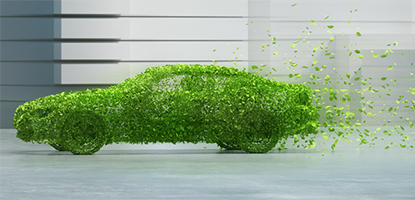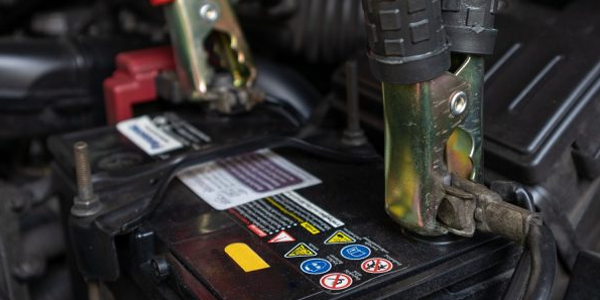November 2025
EV Myth-Busting
Some say they’re the future, some think they’re a hoax. We're here to debunk some of the myths about EVs by sharing the facts.
What Different kinds of EV's are there?
EV or Hybrid? What’s the difference? Here’s the three main types of Electric Vehicles you will come across in the New Zealand market:
BEV - Battery Electric Vehicle: Battery Electric Vehicles are fully electric. They run on an electric motor powered by a rechargeable battery. They are also known as ‘pure electric vehicles’ and are charged externally by being plugged into a power source.
PHEV - Plug-in Hybrid Electric Vehicle: A Plug-in Hybrid Electric Vehicle is a vehicle that runs on petrol or diesel, but is also supported by a electric battery that is plugged in and charged through an external source. These vehicles can switch between engines depending on how much power is needed. Hybrids are useful for anyone who wants to travel long distances, as the petrol engine with give you a greater range than a pure electric engine.
HEV Hybrid Electric Vehicle: A Hybrid Electric Vehicle is powered by an internal combustion engine (ICE) which is supported by an electric battery. These HEVs don’t plug into an external electricity source, so they charge their batteries through regenerative braking.
It’s no secret that EVs do have quite a large upfront cost. The cheapest new EV on the New Zealand market is around $30,000, but you can get used imported EVs for less than half that price! The only downside is their state of health won’t be as high as a brand-new EV. EV demand will grow with changes in import standards, so this makes it difficult to predict what EV prices will look like in the future.
Another factor to help balance out their high prices is the low maintenance they require. Considering that a BEV won’t need oil changes/filters and won’t have gearbox and spark plug problems, there’s a lot less to be taken care of. Of course you’ll still have to look after your tyres, etc. but the lack of petrol related upkeep will save on mechanic bills in the long run. The regenerative braking system saves wear on the brakes.
Think about all the money you’ll save on trips to the petrol station! Charging at home overnight (off peak hours) can make charging your battery as cheap as paying around $3.00 per 100km. It’s hard to give an exact price per km, as charging your EV will cost different amounts depending on the time of day you are charging it. Charging at a rapid charger will cost around $10 per 100km, but may only take about 20 minutes to charge!
While hybrids still need to be filled up with petrol, they are very fuel efficient. They don’t need to use as much fuel as a petrol-powered vehicle, as the electric engine does half the work. This means you will spend less money on fuel, and have less tailpipe emissions.
Range anxiety seems to be the biggest thing stopping people from considering an EV for their next car. What happens if I run out of charge? The same thing that happens if you run out of petrol! You find the nearest place to fill up.
For example, a new Nissan Leaf’s range, fully charged, is roughly 247 kms. This is just over the distance from Auckland Central to Rotorua (227km), after charging just once. Factors like air-conditioning or carrying heavy luggage can drain your battery faster however. Say your battery starts running low, and that range anxiety starts to kick in. If you were driving a petrol-powered car and the empty light started flashing, you would try and find your nearest service station to fill up, right? Same thing goes with an EV.
Maybe having to stop every few hours isn’t such a bad thing? Taking regular breaks while driving will help you drive safely and stay focused on the road. Plus, you’ll have more time to take in the views and properly explore our beautiful country!
It’s just about as simple as plugging in you phone at night. Assuming you have off-street parking, to charge you EV simply plug the charging cable in – one end to the car and one end to a standard three-point power socket in your home. Then just sit back and let it charge!
Public EV Charging Stations
Most people plug in their EVs overnight to fully charge the battery by the time they leave for work the next morning. If you are caught out of home with a steadily dropping battery, there are public chargers all around the country. A map of them can be found here: https://charge.net.nz/map/ and here: https://www.plugshare.com/
These public chargers are much faster than charging at home, and depending on the kind of charger, could refill a battery in about 20 minutes. These chargers aren’t free, and they do cost a lot more than charging at home due to how quickly they can recharge a vehicle.
There’s going to be a carbon footprint in the production of any vehicle. But, once production is complete, pure EVs produce zero emissions (as it doesn’t even have a tailpipe!)
How about the emissions created while generating the power used to charge them? How environmentally friendly is our electricity supply? According to Unison and GenLess, “EVs emit 80% less CO2 than an equivalent petrol vehicle when being driven in New Zealand because electricity generated here is typically at least 80% renewable (mostly from hydro, geothermal and wind).”
If every single car in New Zealand was to swap to electric overnight, EEAC (Energy Efficiency & Conservation Authority) estimates our electricity demand will only increase by about 20%. Since the growth of electric cars in our national fleet will be steady, power providers will have time to build the infrastructure to support the increase in demand for renewable electricity.
Not quite ready to make the switch to an electric vehicle? Don’t have the budget for it? But you’ve still got that urge to see what the eco-friendly-renewable-powered fuss is about? Maybe an electric moped, bike or scooter is for you!
Consider an E-bike – the electric motor makes it easier to pedal uphill or over long distances, and if you run out of battery… all you have to do is keep on pedalling. Due to the electric motor, these bikes are a lot heavier than a regular road bike, so keep that in mind if you do run out of battery.
You may have seen E-scooters popping up in cities across New Zealand in the last few years. These scooters are a fun and zippy way to commute across a city. They can legally be driven on footpaths and can fold up to be tucked under your desk.
E-mopeds are exactly the same as a petrol moped – minus the petrol. They have all the same legal requirements, the only difference is rather than filling it up with petrol, you simply need to remove the battery, take it inside and charge it. And yes, all of these devices are safe to ride in the rain. All of the electrical components are sealed in tightly so they will not get damaged by rainfall.



